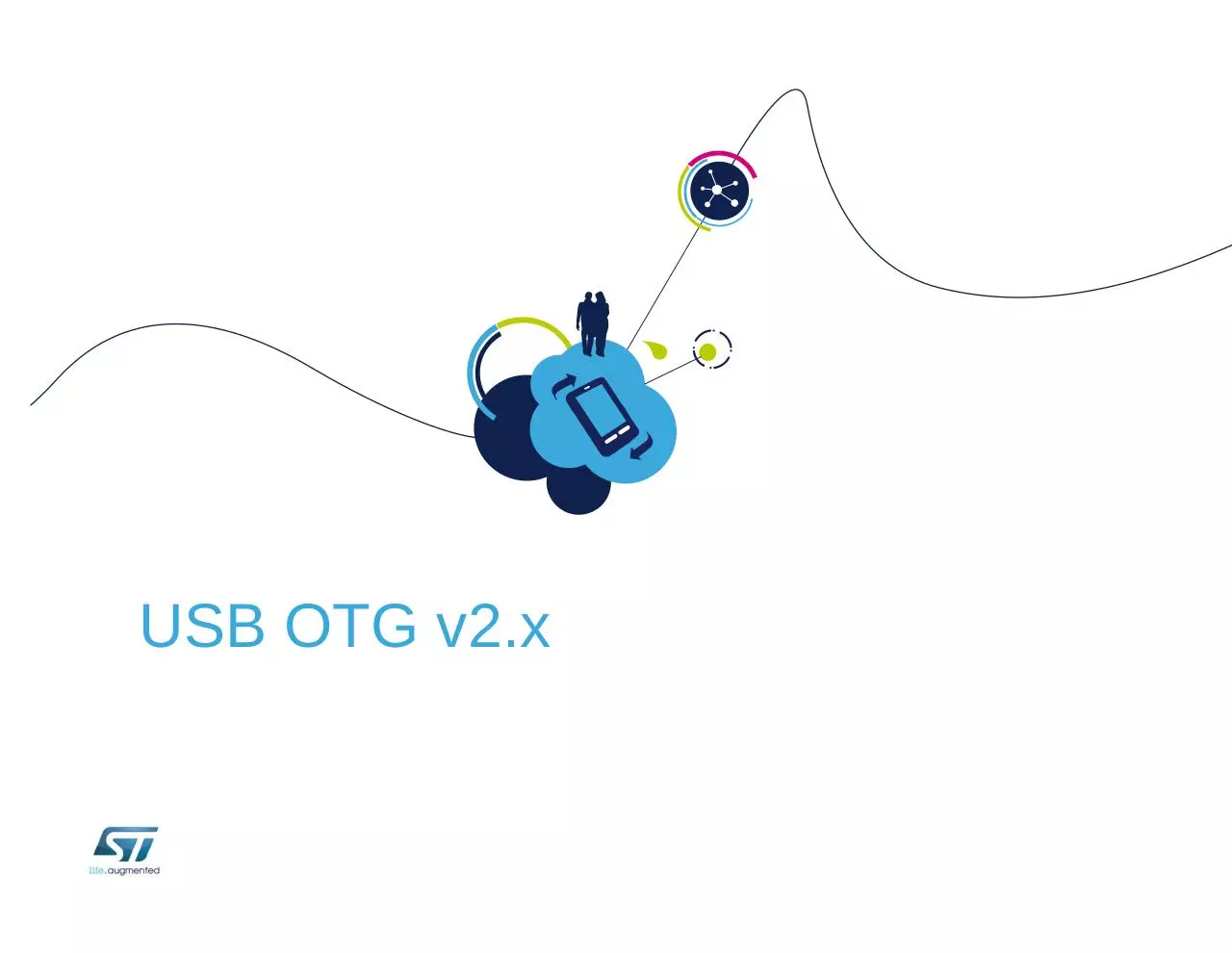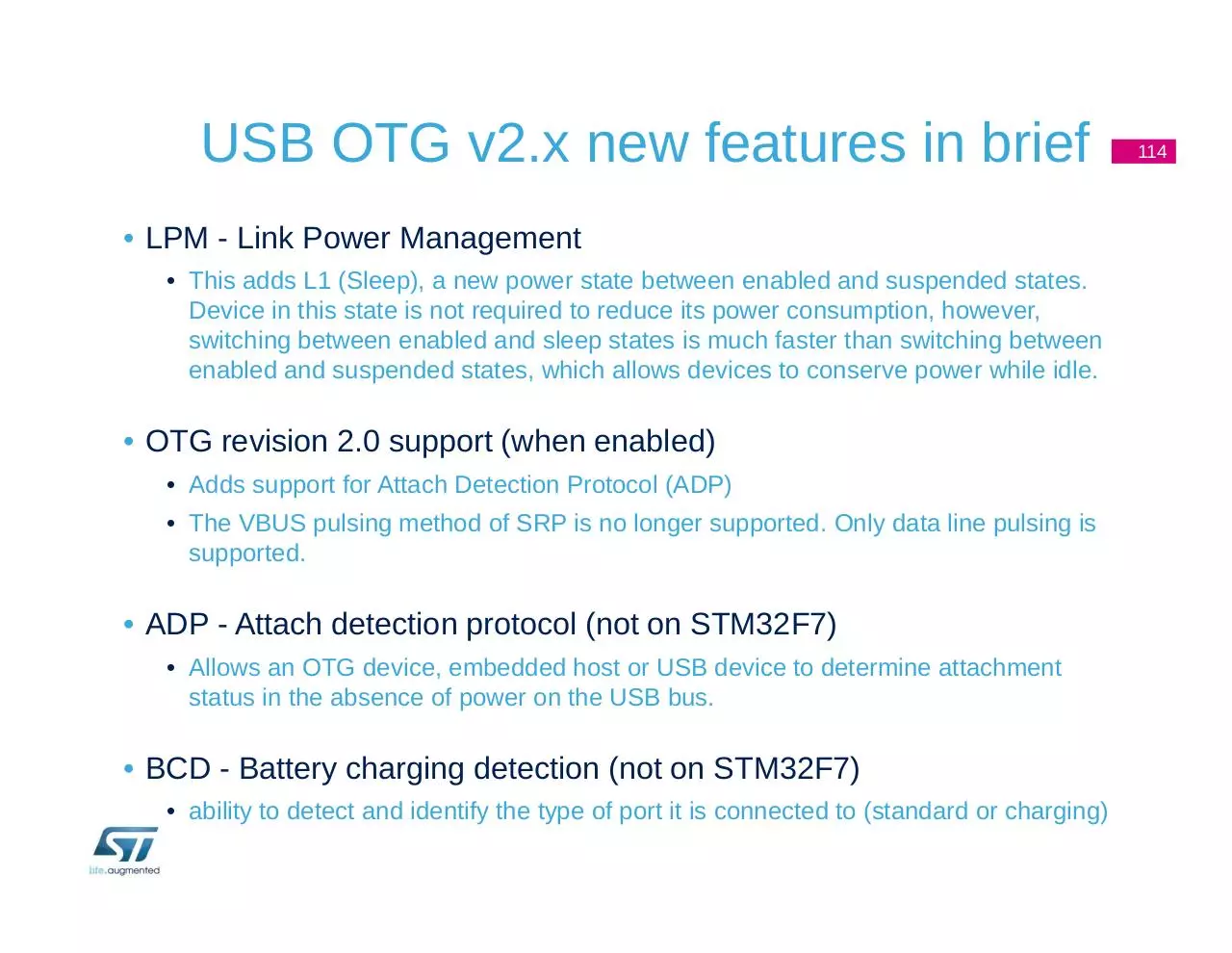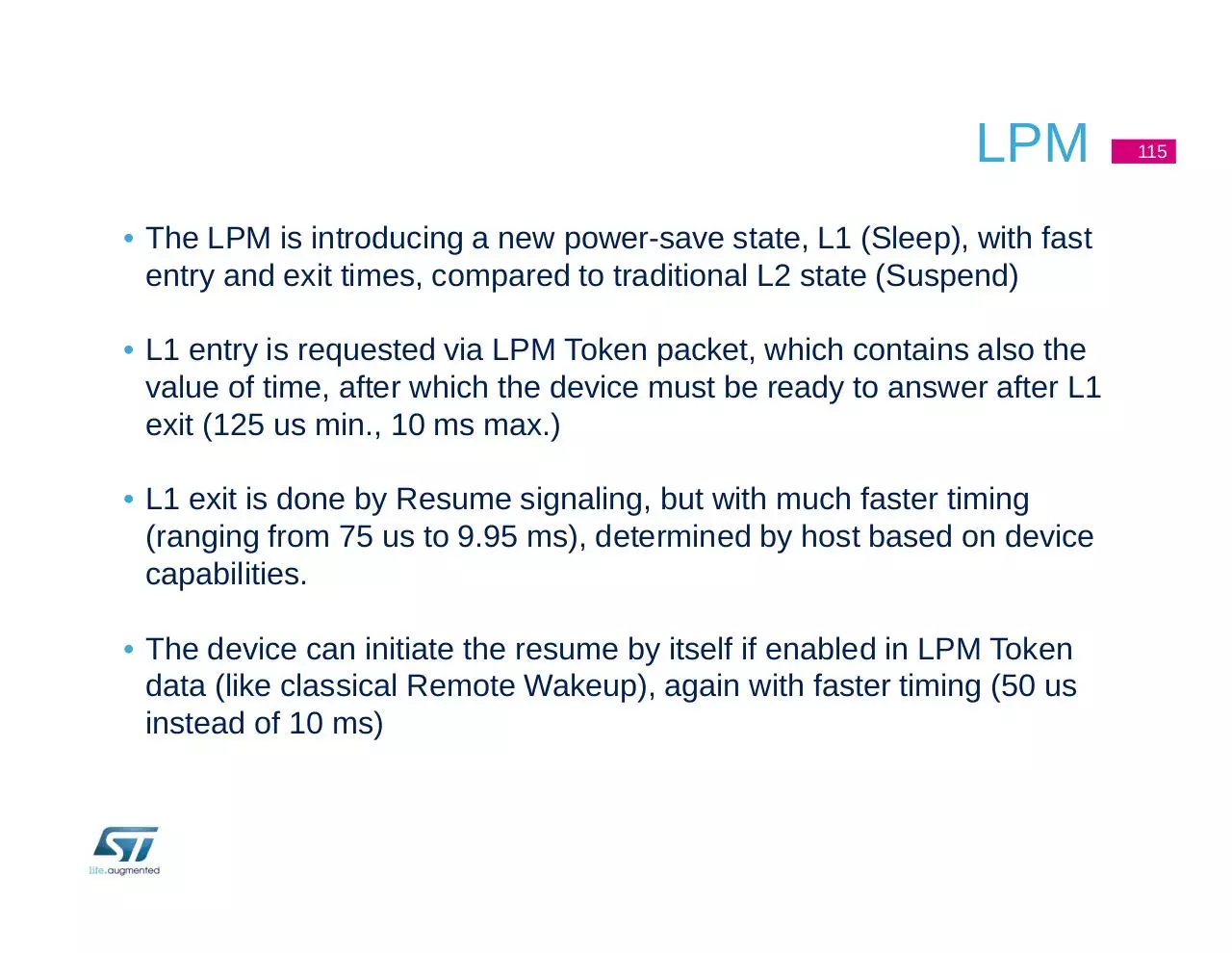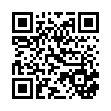USB OTG v2 (PDF)
File information
Title: STM32L4通用串行总线模å—(USB)介ç»
Author: bronco sui
This PDF 1.4 document has been generated by PDFCreator Version 1.5.1 / GPL Ghostscript 9.05, and has been sent on pdf-archive.com on 01/12/2016 at 11:05, from IP address 85.201.x.x.
The current document download page has been viewed 384 times.
File size: 23.04 KB (6 pages).
Privacy: public file





File preview
USB OTG v2.x
USB OTG v2.x new features summary
•
•
•
•
•
Supports USB 2.0 Link Power Management (LPM)
Supports the On-The-Go (OTG) Specification 2.0
Optionally supports:
• Attach Detection Protocol (ADP)
• Battery Charging Detection (BCD) – same as on STM32F0x2
Various bug fixes embedded
For HS embeds ULPI interface fix to support new SMSC PHYs
STM32F2 / STM32F4
USB OTG IP revision
FS v1.2
HS v1.1
STM32L4
FS v2.0
STM32F7
FS v2.1
LPM supported
No
Yes
OTG revision supported
1.3
1.3 & 2.0
HS v2.1
Device BIDIR Endpoints
(including EP0)
4
6
6
6
8
Host mode channels
8
12
12
12
16
Total RAM
~1,2 KB
~4 KB
~1,2 KB
~1,2 KB
~4 KB
Other features
-
-
ADP, BCD
-
-
113
USB OTG v2.x new features in brief
• LPM - Link Power Management
• This adds L1 (Sleep), a new power state between enabled and suspended states.
Device in this state is not required to reduce its power consumption, however,
switching between enabled and sleep states is much faster than switching between
enabled and suspended states, which allows devices to conserve power while idle.
• OTG revision 2.0 support (when enabled)
• Adds support for Attach Detection Protocol (ADP)
• The VBUS pulsing method of SRP is no longer supported. Only data line pulsing is
supported.
• ADP - Attach detection protocol (not on STM32F7)
• Allows an OTG device, embedded host or USB device to determine attachment
status in the absence of power on the USB bus.
• BCD - Battery charging detection (not on STM32F7)
• ability to detect and identify the type of port it is connected to (standard or charging)
114
LPM
• The LPM is introducing a new power-save state, L1 (Sleep), with fast
entry and exit times, compared to traditional L2 state (Suspend)
• L1 entry is requested via LPM Token packet, which contains also the
value of time, after which the device must be ready to answer after L1
exit (125 us min., 10 ms max.)
• L1 exit is done by Resume signaling, but with much faster timing
(ranging from 75 us to 9.95 ms), determined by host based on device
capabilities.
• The device can initiate the resume by itself if enabled in LPM Token
data (like classical Remote Wakeup), again with faster timing (50 us
instead of 10 ms)
115
ADP
• Allows an OTG device, embedded host or USB device to determine
attachment status in the absence of power on the USB bus. This
enables both insertion based behavior and the possibility for a device
to display attachment status.
• It does this by periodically measuring the capacitance on the VBUS
line of USB port to determine whether there is another device
attached, a dangling cable or no cable.
• When a change in capacitance, large enough to indicate device
attachment is detected then an A-device will start to provide power to
the USB bus and look for device connection. A B-device will generate
SRP and wait for the USB bus to become powered.
116
BCD
• If a portable device (PD) is attached to a USB host or hub, then the
USB 2.0 specification requires that after connecting, a PD must draw
less than:
• 2.5 mA average if the bus is suspended
• 100 mA if bus is not suspended and not configured
• 500 mA if bus is not suspended and configured for 500 mA
• New port definitions in Battery Charging Specification (Revision 1.2):
• Standard downstream port (SDP) same port as defined by the USB 2.0 spec.
• Charging downstream port (CDP) normal port with extended current capability
• Dedicated charging port (DCP) car / wall charger, not able to enumerate
• If a PD is attached to a Charging Port (ex.: CDP, DCP), then it is
allowed to draw max 1.5 A without having to be configured or follow
the rules of suspend.
117
Download USB OTG v2
USB OTG v2.pdf (PDF, 23.04 KB)
Download PDF
Share this file on social networks
Link to this page
Permanent link
Use the permanent link to the download page to share your document on Facebook, Twitter, LinkedIn, or directly with a contact by e-Mail, Messenger, Whatsapp, Line..
Short link
Use the short link to share your document on Twitter or by text message (SMS)
HTML Code
Copy the following HTML code to share your document on a Website or Blog
QR Code to this page

This file has been shared publicly by a user of PDF Archive.
Document ID: 0000515523.